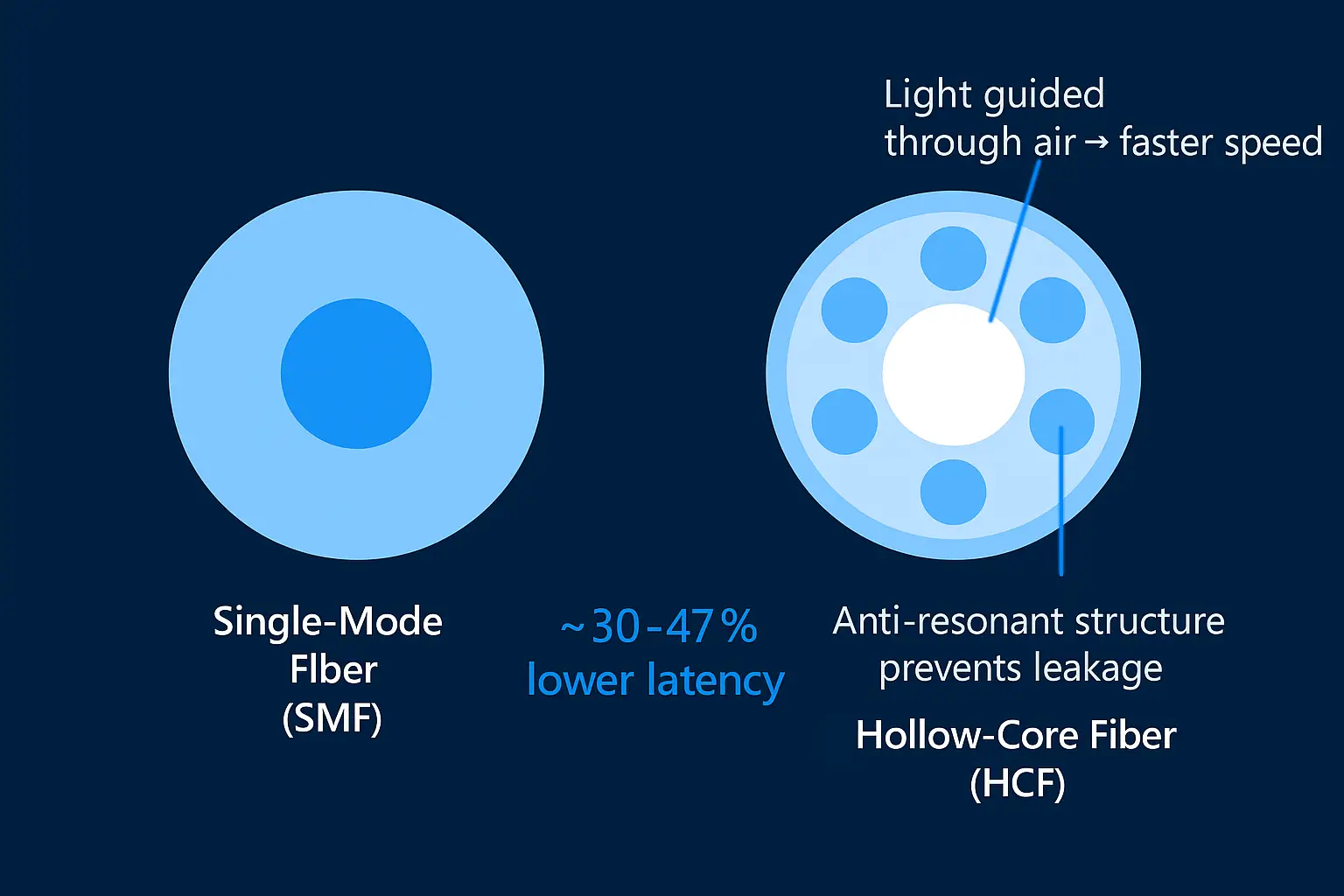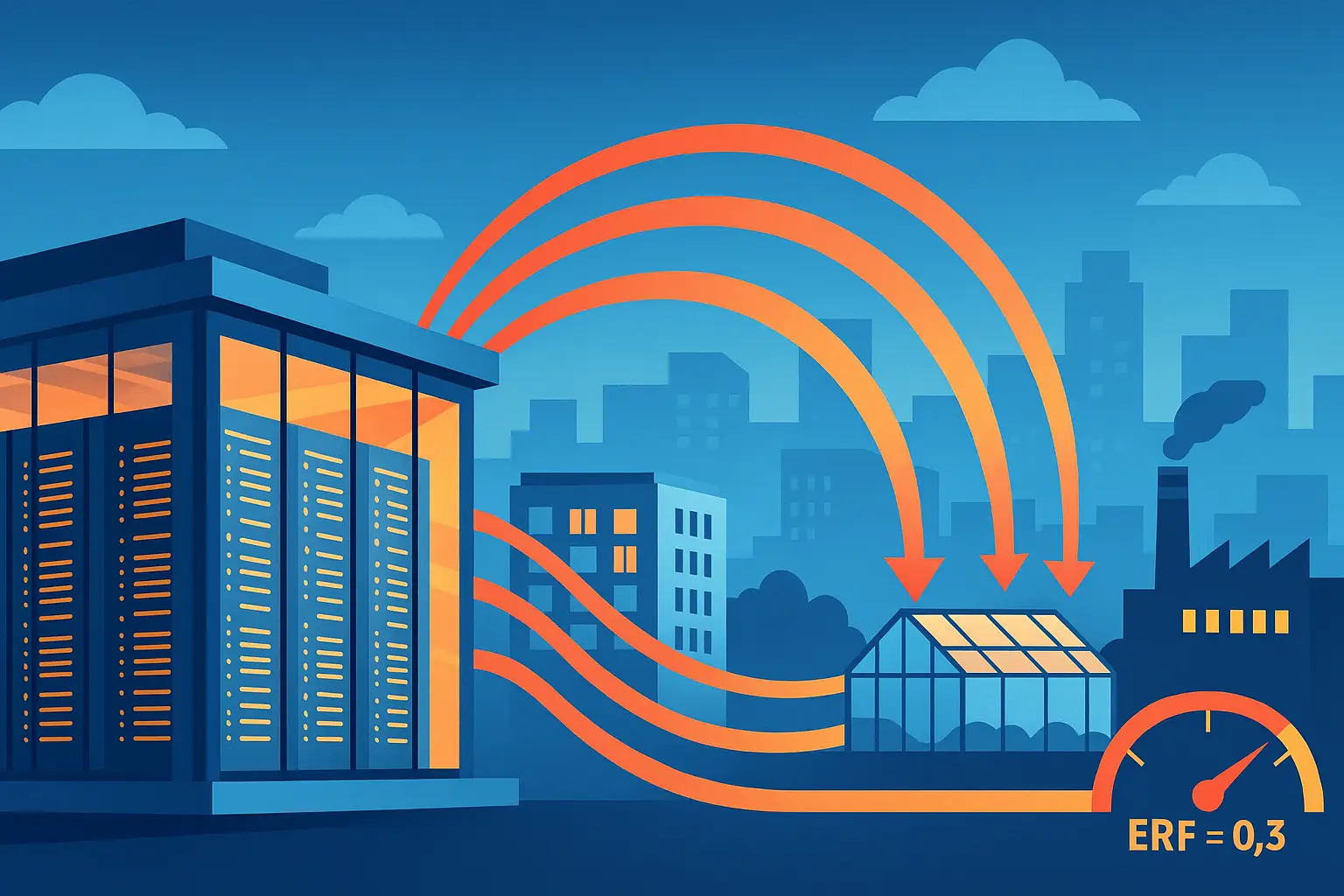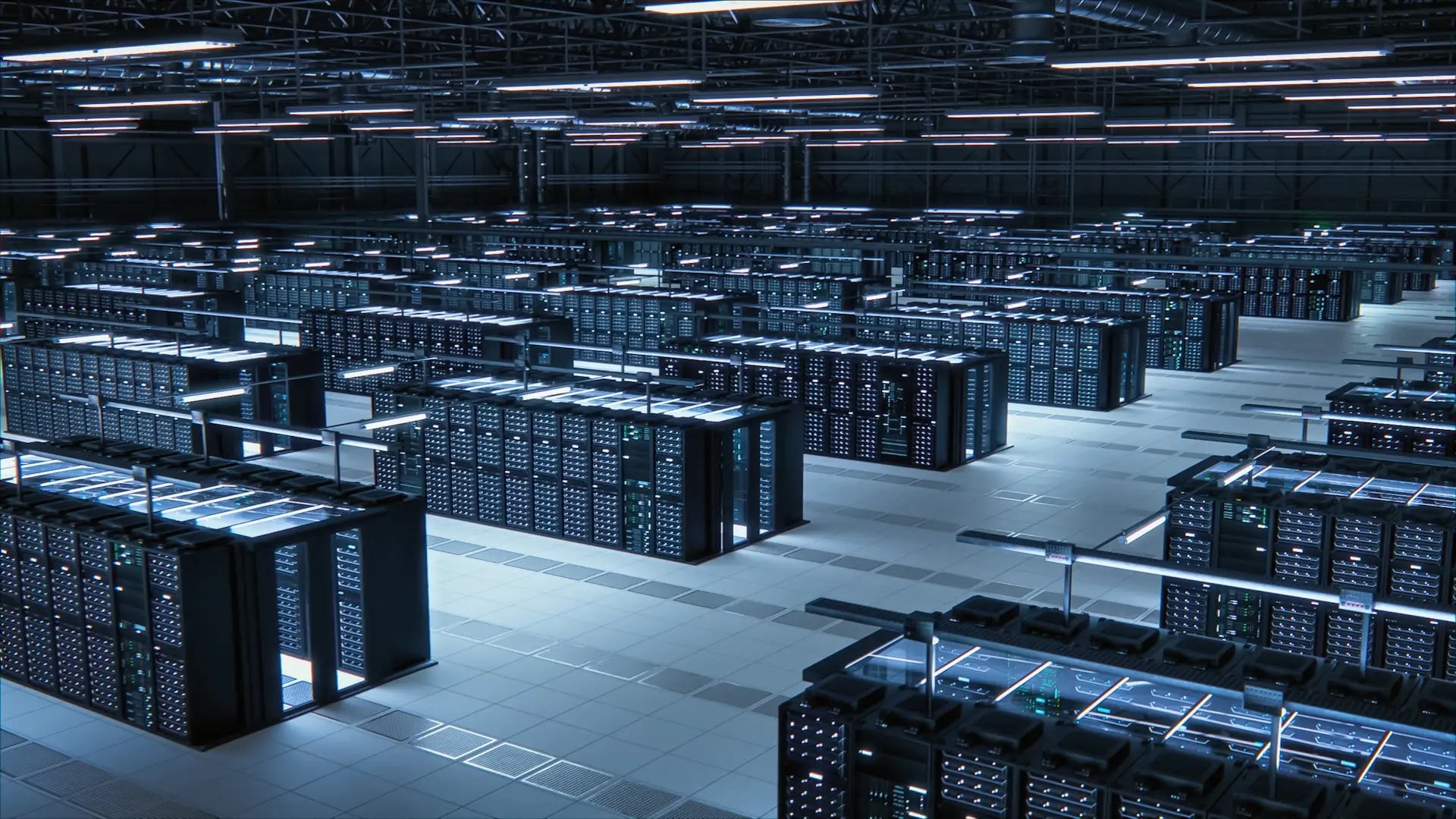Accelerating Connectivity for the Next Generation of Networks
Inleiding
The race to power artificial intelligence and data-driven applications is pushing traditional fiber infrastructure to its limits. To meet these new demands, Hollow-Core Fiber (HCF) has emerged as a breakthrough technology — one that guides light through air instead of glass, dramatically reducing latency and improving bandwidth.
Recent breakthroughs — including Microsoft’s deployment of hollow-core fiber across Azure’s global network — indicate that this technology is no longer experimental. It’s now becoming a practical option for backbone interconnections and high-performance links over longer distances, supporting AI workloads, cloud backbones, and latency-sensitive trading networks.

Why Hollow-Core Fiber Matters
Traditional single-mode fiber (SMF) transmits light through solid glass, where the signal travels slower and is affected by distortion.
Hollow-core fiber replaces that glass core with an air-filled channel, allowing light to move closer to its true speed — resulting in:
- 30–47% lower latency compared to standard fiber.
- Higher bandwidth per fiber, supporting next-generation coherent transmission.
- Reduced signal loss, improving overall link quality and efficiency.
For AI, this means faster synchronization between GPUs, shorter training times, and improved utilization of high-performance computing clusters. For financial services, it means faster transactions and improved competitive edge.
Microsoft’s Move Toward HCF-Powered AI Networks
Microsoft’s Azure network now includes live deployments of HCF, carrying real customer traffic across multiple data center regions. The company plans to expand to 15,000 km of hollow-core fiber, creating a backbone optimized for AI-scale data exchange.
According to Microsoft’s Azure team, HCF is key to accelerating AI workloads by reducing interconnect latency and enabling more efficient scaling across distributed data centers.
In effect, HCF is becoming a data movement accelerator — just as GPUs accelerate computation.
Does HCF Work with Existing Network Hardware?
Hollow-core fiber can operate with today’s DWDM systems, coherent transceivers, and optical monitoring tools, but specialized components and design adjustments are needed for best results.
Compatible today:
- DWDM and coherent optics — proven in field trials by Microsoft, Nokia, and OFS.
- Standard network hardware — routers, amplifiers, and monitoring tools remain largely compatible.
- Existing DWDM line systems — work with tuning for dispersion and loss budgets.
Requires adaptation:
- Splicing and connectors: HCF’s structure demands new fusion techniques and termination kits.
- Optical modules: Some coherent transceivers may need firmware tuning to account for different dispersion values.
- Network design: Engineers must update margin budgets and splice loss assumptions.
In short, HCF integrates with existing ecosystems, but careful design and validation are essential to unlock its full potential.

DWDM and Hollow-Core Fiber: A Powerful Combination
Dense Wavelength Division Multiplexing (DWDM) — the standard for high-capacity optical transport — works effectively with hollow-core fiber.
Recent trials by China Telecom, Nokia, and Microsoft have confirmed that coherent DWDM channels can operate over HCF with terabit-class throughput, reduced nonlinearities, and expanded spectral range.
Because HCF lowers optical distortion, it allows higher launch powers and supports broader wavelength bands (C+L and beyond), making it ideal for AI and high-performance computing backbones.
In practical terms:
- DWDM enables multiple high-speed channels over the same HCF link.
- HCF enhances performance by reducing latency and nonlinear interference.
- Together, they create a low-latency, high-capacity transport layer for AI-era networks.
Where Hollow-Core Fiber Makes Sense
HCF deployment offers the best return in latency-sensitive and high-value applications, including:
- AI data center interconnects (DCIs) – reducing synchronization times across GPU clusters.
- Financial networks – enabling faster trades and real-time data transmission.
- Secure communications and quantum networking – improved signal integrity and lower backscatter for safer transmission.
- Long-haul routes – reducing the number of amplifier sites needed, cutting both capital and operational costs.
For now, traditional fiber still dominates access and long-distance routes, but HCF is the strategic upgrade path for core AI and high-performance interconnects.
Power Tomorrow's Networks with Azura Consultancy
Partner with industry specialists who bring real-world engineering, consulting, and training expertise to accelerate your fiber optic and HCF projects—from design and deployment to optimization.
Contact us today to discuss how we can support your network strategy.
Azura Consultancy: Enabling the Next Step in Network Evolution
At Azura Consultancy, we help organizations evaluate and integrate next-generation optical technologies like Hollow-Core Fiber. Our role is to bridge innovation with implementation — ensuring every deployment is technically sound, cost-effective, and future-ready.
Our expertise covers:
- Network Design & DWDM Integration – custom optical route planning, span budgeting, and mixed HCF/SMF design.
- Feasibility Studies & ROI Analysis – assessing where HCF provides measurable latency and cost advantages.
- Product & Technology Assessment – independent evaluation of HCF vendors, components, and DWDM compatibility.
- Implementation Support – managing pilot deployments, validation testing, and network optimization.
Whether you’re planning an AI interconnect, financial trading route, or quantum-ready backbone, Azura provides the technical insight and strategic guidance to make it happen — from feasibility to field deployment.
Conclusie
Hollow-Core Fiber marks a turning point in optical networking — transforming light speed into real business value.
It’s not just about faster data; it’s about building infrastructure ready for AI, automation, and the next generation of connected intelligence.
Microsoft’s adoption of HCF shows the direction the industry is heading.
Now is the time for organizations to evaluate their readiness, explore network design options, and partner with experts who understand both the technology and the business case.
At Azura Consultancy, we’re ready to help design that future.










